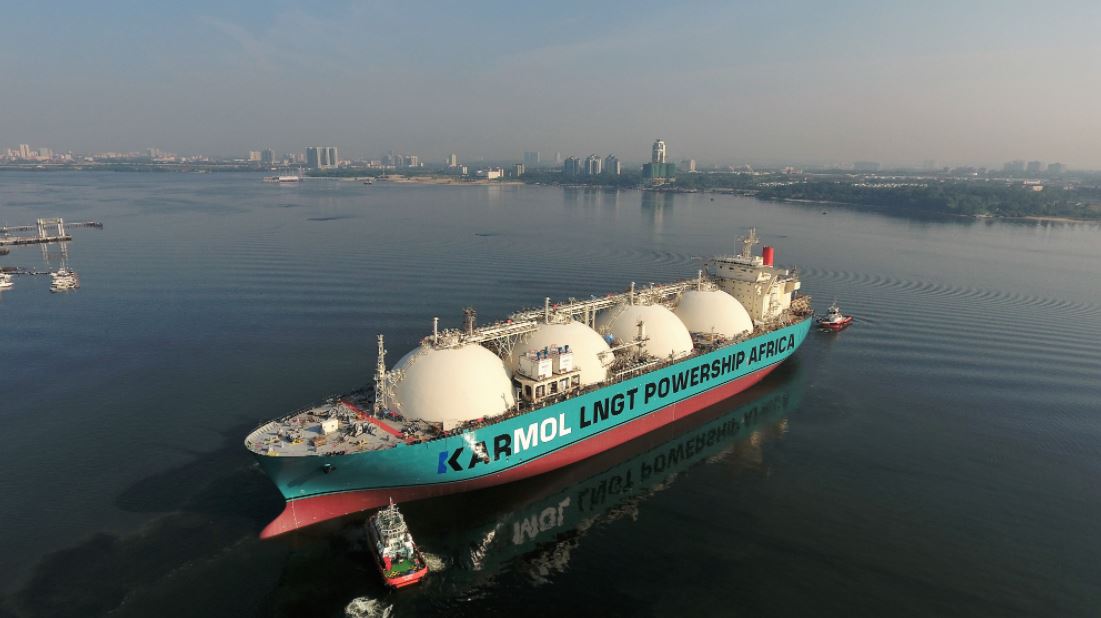KARMOL’s first FSRU is on its way to Senegal after it completed sea trials off Singapore. It should arrive in the West African country in May.
To remind, the joint venture of Turkey’s Karpowership and Japan’s MOl took delivery of Karmol LNGT Powership Africa on March 15 at Sembcorp Marine in Singapore, after it departed for sea trials.
Sembcorp converted the 125,000-cbm FSRU from an old MOSS-type carrier.
KARMOL said then the FSRU would depart to Senegal in early April to start serving the 235 MW Powership alongside the shores of Dakar before the end of June.
The venture’s technology includes a combination of Powerships and FSRU’s to bring LNG-to-power projects to countries with no domestic gas supply.
Karmol LNGT Powership Africa was on Friday located in the Indian Ocean, offshore Mauritius, VesselsValue data shows. It looks like the 272 meters long vessel is being towed.
The FSRU should arrive in Dakar around May 24.
Mauritius Commercial Bank provides $60 million loan
In a related development, the Mauritius Commercial Bank said on Friday it would provide $60 million funding to fuel Senegal’s national electrification and LNG ambitions.
The bank’s loan makes part of the syndicated project finance facility of $140 million to Karpowership.
MCB was not only a co-mandated lead arranger but provided the highest loan commitment, it said.
The project finance facility has enabled Karpowership to operate its 235 MW Powership alongside the shores of Dakar since August 2019.
In addition, the Powership contributes to around 15% of Senegal’s electricity supply.
Following the arrival of the FSRU in the coming weeks, it would shift from the use of heavy fuel oil to regasified LNG, the bank said.
This fuel switch-over would generate “material reduction in Senegal’s fuel bill with positive spill-over effect on electricity costs in line with the Plan Sénégal Emergent,” the bank said.
Moreover, the use of gas will enable Senegal to cut its carbon emission.
Senegal has ambitions to shift primarily to natural gas for its power production by 2035, thereby reducing further the national grid’s emissions factor, the bank said.

